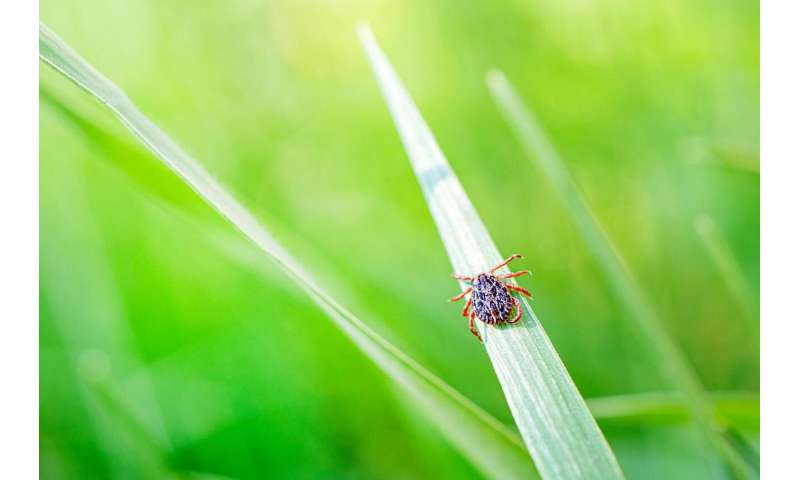
Scientists at The Wistar Institute have designed and tested the first-of-its-kind synthetic DNA vaccine against Powassan virus (POWV), targeting portions of the virus envelope protein. A rapidly reemerging tick-borne disease, POWV has been reported to be fatal in 10% of infected people with detrimental neurological consequences including encephalitis and meningitis. This new POWV vaccine candidate, described in a paper published today in PLOS Neglected Infectious Diseases, is one of many emerging infectious disease DNA vaccine discoveries being advanced by the Vaccine and Immunotherapy Center at The Wistar Institute.
Unlike the widely recognized Lyme disease, POWV causes a little known, potentially deadly infectious disease that is transmitted through tick bites during fall and spring seasons. POWV is an RNA virus belonging to the flavivirus family, the same as Zika virus, but passed to people by ticks instead of mosquitoes.
Transmission can occur rapidly and symptoms including flu-like fever, body aches, skin rash, and headaches can present anytime during the 1-4 week incubation period. Although still considered relatively rare, in recent years the number of reported cases of people sick from Powassan virus has been increasing in North America, including infecting former U.S. Senator Kay Hagan who contracted Powassan virus and died from the disease. There are no vaccines or therapies available to treat or prevent this emerging infection.
Kar Muthumani, Ph.D., former associate professor and director of the Laboratory of Emerging Infectious Diseases at The Wistar Institute, and senior author on the study, collaborated with the laboratory of David B. Weiner, Ph.D., executive vice president and director of Wistar’s Vaccine and Immunotherapy Center, to design and test this synthetic DNA vaccine.
The effectiveness of this vaccine was evaluated in preclinical studies that showed a single immunization elicited broad T and B cell immune responses in mice similar to those induced naturally in POWV-infected individuals, and that vaccine-induced immunity provided protection in a POWV challenge animal model.
“The significant protection in mice demonstrated by our vaccine is highly encouraging and strongly supports the importance of this vaccine approach for further study,” said Muthumani.
Residents of and visitors in POWV-endemic areas are considered at risk of infection, especially during outdoor work and recreational activities. In the U.S., cases of POWV disease have been reported in Northeastern states and the Great Lakes region.
Source: Read Full Article
